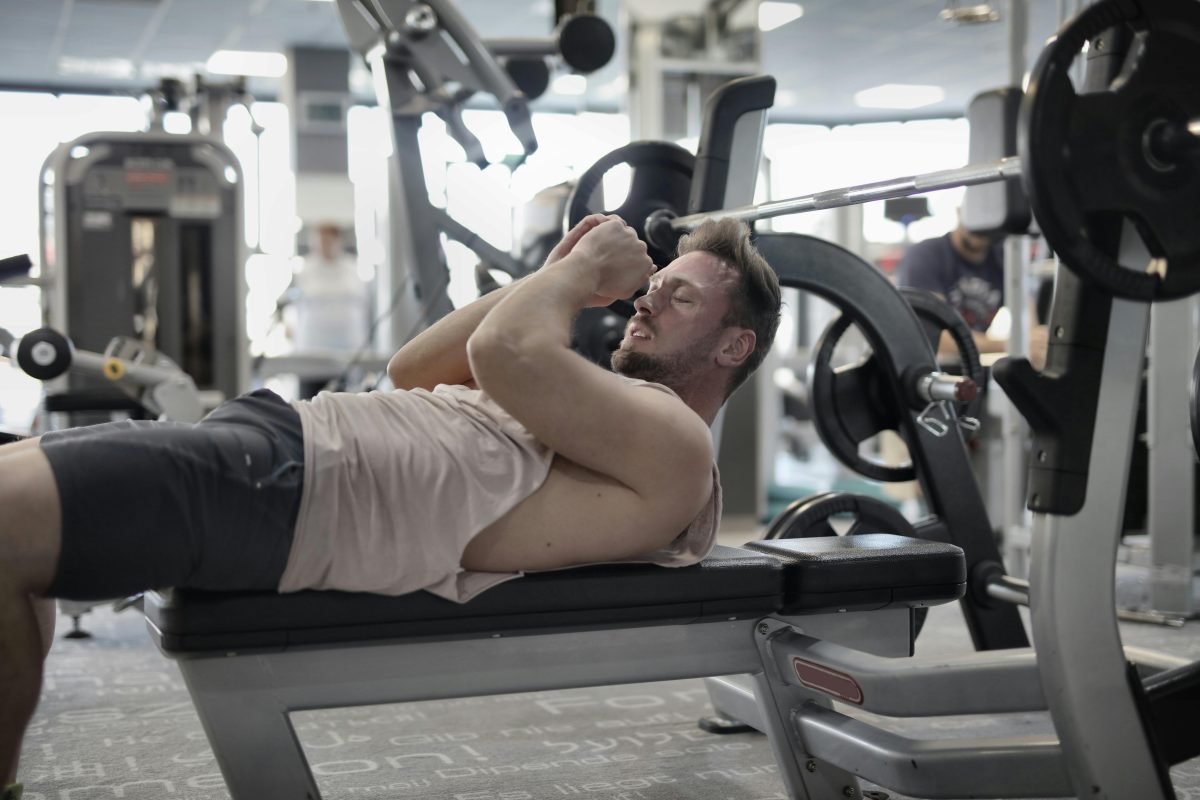Last Updated on: 14th July 2024, 08:53 am
Introduction to Advanced Fitness Challenges

For advanced athletes, the quest for peak performance is unending. Pushing limits isn’t just recommended; it’s essential. It’s about breaking barriers, both mental and physical, to reach new heights of fitness and endurance. This journey introduces a variety of challenges, each designed to test and expand the boundaries of what’s possible.
- High-intensity interval training (HIIT)
- Multi-discipline endurance events
Strength, speed, agility, and stamina are all put to the test, ensuring that every aspect of an athlete’s capabilities is honed to perfection. Whether it’s conquering grueling obstacle courses or mastering the art of ultra-marathons, these challenges are the ultimate proving grounds for the elite athlete.
The Role of Mental Toughness in Advanced Fitness

At the heart of advanced fitness lies not just physical prowess but a fortress of mental toughness. It’s the psychological armor that separates the good from the great. Understanding the psychological barriers that often stand in the way is the first step toward shattering them. These barriers, be they fear, doubt, or fatigue, can derail even the most dedicated athletes.
Strategies for mental conditioning are as critical as physical training. Techniques such as visualization, goal setting, and positive self-talk are not just tools; they are weapons in the arsenal of an advanced athlete. These methods fortify the mind, preparing it for the inevitable battles ahead. They transform mental resilience into a tangible asset, one that can be called upon when the body screams for respite.
The connection between mental resilience and physical performance is undeniable. A strong mind propels the body beyond perceived limits. It’s the fuel that powers athletes through the final, grueling stretch of a race or the last, seemingly impossible set of a workout. This synergy of mind and body is the essence of advanced fitness. It’s not merely about being physically fit but being mentally unbreakable. And in the realm of advanced athletics, it’s this unbreakable spirit that defines champions.
High-Intensity Interval Training (HIIT) Challenges

High-Intensity Interval Training (HIIT) stands as a beacon for advanced athletes seeking to elevate their fitness. This method leverages intense bursts of activity followed by short recovery periods, igniting the body’s metabolic rate and enhancing athletic performance. The science is clear: HIIT not only maximizes calorie burn but also improves endurance, speed, and strength, making it an indispensable tool for those at the pinnacle of physical fitness.
- Plyometric jumps
- Sprint intervals
- Complex bodyweight movements
For those ready to push their limits, advanced HIIT workouts might challenge the body and mind, ensuring that athletes continue to see significant gains. A typical session could involve a circuit of burpees, high knees, and mountain climbers, each performed at maximum intensity with minimal rest in between.
Measuring progress in HIIT is crucial for safely increasing intensity. This can be done through tracking improvements in workout duration, decreasing rest periods, or increasing the number of repetitions. Advanced athletes often use heart rate monitors to ensure they are reaching their desired intensity levels without overstepping, thus optimizing performance while minimizing the risk of injury.
Embracing HIIT challenges not only propels athletes to new heights of physical capability but also instills a sense of accomplishment and mental toughness. It’s a journey of pushing past boundaries, where each session builds not just muscle, but character.
Endurance Challenges Beyond the Marathon

Exploring Ultra-Endurance Events
For those who find marathons too mundane, the world of ultra-endurance events offers a thrilling new frontier. Ultramarathons, extending beyond the traditional 26.2 miles, and Ironman triathlons, combining swimming, biking, and running, push athletes to their limits and beyond. These events are not just races; they are epic journeys that test one’s physical and mental endurance.
Training Tips for Extreme Endurance
- Incremental increases in training distances
- Cross-training
- Rest days
- Mental preparation
Training for such colossal challenges requires a strategic approach. Incremental increases in training distances help the body adapt without succumbing to injury. Cross-training, incorporating activities like cycling and swimming, prevents overuse injuries and builds overall strength. Rest days are sacred, allowing for recovery and growth. Mental preparation, including visualization and resilience-building exercises, is as crucial as physical training.
Nutrition and Recovery for Long-Duration Events
Nutrition fuels the engine of endurance. A balanced diet rich in carbohydrates, proteins, and fats provides the energy needed to sustain prolonged physical activity. Hydration, with a focus on electrolyte balance, is vital to prevent cramping and dehydration. Post-event recovery focuses on replenishing depleted nutrients and rest. Techniques such as foam rolling, massage, and cold therapy can aid in muscle recovery, preparing the athlete for their next challenge.
Ultra-endurance events are the ultimate test of an athlete’s capabilities. They require meticulous preparation, unwavering dedication, and a relentless pursuit of pushing one’s limits. The journey to completing these events is arduous, but the sense of accomplishment and the boundaries broken make it all worthwhile.
Strength and Powerlifting Competitions

For those who thrive on the sheer display of force, strength and powerlifting competitions stand as the ultimate challenge. These arenas are where advanced athletes showcase their dedication, lifting weights that seem to defy the limits of human capability. The journey to the platform is marked by relentless training, precise technique, and an unwavering commitment to pushing the envelope of personal power.
Training regimes for these athletes are meticulously crafted. A blend of heavy lifting and accessory work, the programs aim to increase both strength and power. Progressive overload is the cornerstone, gradually increasing the weight to challenge the muscles while minimizing the risk of injury. Compound movements like squats, deadlifts, and bench presses are the staples, supported by targeted exercises to strengthen the supporting cast of muscles.
The importance of technique cannot be overstated. Proper form not only maximizes the efficiency of each lift but also safeguards the athlete against injuries. Diet plays a critical role, fueling the body for peak performance and recovery. A balanced intake of proteins, carbohydrates, and fats ensures that the muscles have the necessary resources to grow stronger. Recovery, often overlooked, is where the magic happens. It’s during this time that the body repairs and strengthens itself. Strategies such as adequate sleep, nutrition, and active recovery days are essential to bounce back stronger for the next training session.
Strength and powerlifting competitions are not just about the weights lifted; they are a testament to the athlete’s dedication to their craft. The journey is demanding, requiring a symphony of strength, technique, diet, and recovery. But for those who rise to the challenge, the rewards are unparalleled, offering a sense of accomplishment and a demonstration of the incredible capabilities of the human body.
Cross-Training Challenges for Peak Performance

Integrating varied disciplines into an athlete’s regimen can unlock new levels of fitness. Swimming, cycling, and rock climbing, for instance, engage different muscle groups, enhance cardiovascular health, and improve flexibility. This diversity not only breaks the monotony of training but also fosters a more balanced physique.
- Strategic Approach: Designing a cross-training program requires identifying and blending activities that complement each other, ensuring each discipline contributes to the athlete’s overall fitness goals.
- Components of a Well-Rounded Program: A mix of aerobic exercises, strength training, and flexibility workouts, each tailored to the individual’s needs.
One of the most significant advantages of cross-training is injury prevention. By varying workouts, athletes reduce the risk of overuse injuries, common when repeating the same motions. Moreover, cross-training can shore up weaknesses, turning potential vulnerabilities into strengths. It’s a proactive approach to fitness that keeps the body guessing and the mind engaged.
- Challenging the Body: Cross-training is about introducing new and exciting challenges to the training routine.
- Enhancing Physical Capabilities: It’s a journey that not only enhances physical capabilities but also injects a fresh zest into training routines.
- Essential for Advanced Athletes: For the advanced athlete, it’s an essential component of the quest for peak performance.
In Closing
Challenges forge champions in the realm of advanced fitness. These trials, both mental and physical, are the crucibles in which elite athletes are refined. Through a blend of HIIT, endurance feats, strength competitions, and cross-training, athletes not only push their limits but redefine them, balancing the scales of effort and reward in a quest for peak performance. This journey, marked by relentless dedication and strategic preparation, invites athletes to explore the depths of their capabilities and the heights of their ambitions. Let this be a call to action for advanced athletes everywhere: to embrace the challenges ahead, for it is in overcoming them that true greatness is forged.
Fitness Challenges for Advanced Athletes FAQs
Fitness challenges should not replace an advanced athlete’s regular training program but rather complement it. These challenges can introduce variety and prevent boredom, but a structured training program is essential for systematic improvement and achieving specific performance goals. Incorporating challenges periodically can enhance motivation and test the effectiveness of the regular training regimen.
Advanced athletes should select challenges that align with their fitness goals and areas they wish to improve. It’s important to research the challenge’s structure, required skills, and intensity level to ensure it matches their capabilities and objectives. Consulting with a coach or a fitness professional can also provide valuable insights into whether a particular challenge is suitable.
Advanced athletes can measure progress by tracking performance metrics specific to the challenge, such as time to completion, repetitions completed, or weight lifted. Comparing these metrics to baseline measurements taken before starting the challenge can provide a clear picture of improvements. Additionally, subjective measures like perceived exertion and recovery can offer insights into fitness gains and overall well-being.
Fitness challenges for advanced athletes are typically more intense, involve complex movements, and require a higher level of skill and endurance. They are designed to push the limits of individuals who already have a solid fitness foundation and are looking to further enhance their performance. In contrast, challenges for beginners focus on building a fitness base, learning fundamental movements, and gradually increasing intensity.
Advanced athletes should participate in fitness challenges every 2 to 4 months to keep their training regimen fresh and challenging. This frequency allows sufficient time for recovery and to assess improvements in performance while maintaining a high level of motivation. However, the exact frequency can vary based on the athlete’s recovery capacity and the intensity of the challenges.
Fitness challenges can significantly enhance an advanced athlete’s performance by pushing their limits and introducing new training stimuli. These challenges often incorporate varied workouts that can prevent training plateaus, ensuring continuous improvement. Additionally, they foster a competitive spirit and camaraderie among participants, which can be highly motivating.
The primary risks include overtraining, injury, and burnout due to the high intensity and volume often associated with these challenges. It’s crucial for athletes to listen to their bodies and incorporate adequate rest and recovery strategies. Proper preparation and scaling of challenges to match fitness levels can help mitigate these risks.
After completing a fitness challenge, advanced athletes should focus on active recovery, adequate sleep, and proper nutrition to facilitate muscle repair and replenish energy stores. Techniques such as foam rolling, stretching, and light activity can help reduce muscle soreness and maintain mobility. Ensuring a balanced intake of proteins, carbohydrates, and fats, along with staying hydrated, is essential for effective recovery and preparation for future challenges.
Nutrition is crucial for optimizing performance during fitness challenges and aiding in recovery afterward. A well-balanced diet that meets energy and nutrient demands can help improve endurance, strength, and recovery times. Paying attention to hydration, macronutrient balance, and timing of meals can significantly impact an athlete’s ability to perform and recover.
Fitness challenges that incorporate a mix of strength, endurance, and flexibility components tend to be most beneficial for advanced athletes. These challenges can help athletes develop a well-rounded fitness base, reduce the risk of injury, and improve overall athletic performance. Challenges that can be tailored to an athlete’s specific sport or fitness goals are particularly advantageous.
Orlando is a all round athlete from Australia, now resident in Germany. His sports of passion of American Football(Offensive line), weight training and indoor rock climbing where he uses his 195cm wing span to his advantage.



